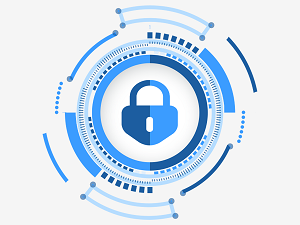A computer virus is a type of malicious software (malware) that infects and spreads by attaching itself to legitimate programs or files. It relies on users executing or opening infected files to propagate and carry out its malicious activities. Computer viruses can cause various types of damage, including data corruption, system crashes, unauthorized access, and information theft. Here is a detailed explanation of computer viruses, including attack indicators, patterns, and examples of famous virus attacks:
- Characteristics of Computer Viruses:
- Replication: Viruses have the ability to replicate themselves by attaching their code to other programs, documents, or files, thereby spreading to other systems or devices.
- Self-Propagation: Viruses can spread autonomously, often through infected files shared via email, removable media, or network connections.
- Concealment: Viruses typically try to hide their presence to avoid detection by antivirus software or security measures.
- Payload: Viruses may have various payloads, including damaging or destructive actions, theft of information, or creating backdoors for remote access by attackers.
- Activation: Viruses can be designed to activate upon specific triggers, such as a particular date, the presence of certain files, or user actions.
- Attack Indicators of Computer Viruses:
- Unexpected System Behavior: Viruses can cause abnormal system behavior, including frequent crashes, slow performance, and unusual error messages.
- Unusual Network Traffic: Infected machines might generate unusual or suspicious network traffic, such as excessive data transfer or connections to known malicious IP addresses.
- Modified Files: The presence of unexpected file modifications, particularly executable files, may indicate a virus infection.
- Disabled Security Software: Viruses often attempt to disable or manipulate antivirus software and other security measures to avoid detection.
- Email or Messaging Anomalies: Viruses may send malicious emails or messages from infected machines, often to contacts in the victim’s address book.
- Famous Virus Attacks:
- Melissa (1999): Melissa was a macro virus that spread via email attachments in Microsoft Word documents. It infected thousands of systems, overloaded email servers, and caused widespread disruptions.
- ILOVEYOU (Love Bug) (2000): The ILOVEYOU virus was distributed through email with a subject line “ILOVEYOU.” Once opened, it infected files, spread to email contacts, and caused extensive damage, including file corruption and information theft.
- Code Red (2001): Although primarily known as a worm, Code Red had virus-like characteristics. It exploited a vulnerability in Microsoft IIS web servers, defaced websites, and launched DDoS attacks on specific IP addresses.
- Sasser (2004): The Sasser worm targeted Microsoft Windows operating systems and spread through network connections. It caused system crashes, slowed down networks, and affected millions of computers worldwide.
- Conficker (2008): Conficker was a highly sophisticated worm that exploited Windows vulnerabilities to infect millions of systems. It created a massive botnet, allowing attackers to remotely control the infected machines.
These examples highlight the disruptive nature and significant impact of computer viruses. To protect against virus attacks, it is crucial to implement strong cybersecurity practices such as using updated antivirus software, regularly applying security patches, being cautious when opening email attachments or downloading files, and maintaining backups of critical data. Additionally, user education and awareness about safe online practices play a crucial role in preventing virus infections.
